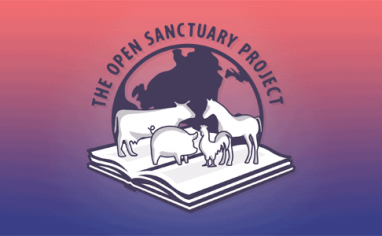
Photo by Oleksandr P on Pexels
Introduction
As a unique learning space, your sanctuary might be interested in facilitating compassionate educational programs with local school groups. Being able to align your program’s messaging with the academic goals and standards of those local school groups is one helpful way to attract them to your space. Whether you are already familiar with academic standards or not, we’ve written this resource to help sanctuary educators gain a better understanding of what academic standards are and how aligning them with your own learning goals can help you attract local school groups to your programming.
What Are Academic Standards?
Each year throughout their K-12 education experience, public school students in the U.S. are expected to learn certain skills and knowledge. These skills and knowledge are called academic standards. Academic standards are set, reviewed, and modified by individual states and local communities, and are intended to help guide school instruction, ensure all kids are taught the same fundamental skills, and measure student success. You can take a look at your individual state’s academic standards on the website for your state’s department of education.
Do Private Schools and Homeschools Follow State Academic Standards?
In short, private schools do not have to follow their respective state’s academic standards. They have the freedom to choose their own. However, the rules vary by state for homeschoolers.
Are English Language Learners Expected to Follow State Academic Standards?
In short, yes. State and federal law requires English language learners to follow the general academic standards set by their state. However, it also requires they receive the support and services they need to help them meet those standards. Instruction provided to ELLs must be appropriate for their individual English language proficiency level. The U.S. Department of Education has guidance for schools on ELLs. If you are interested in learning more about this, you can find additional information here.
Are Students with Disabilities Expected to Follow State Academic Standards?
In short, yes. The federal Individuals with Disabilities Education Act requires students with IEPs (Individualized Education Programs) to participate in the general education curriculum and academic standards set by their state. However, it also requires they receive the support and services they need to help them meet those standards. The U.S. Department of Education has guidance for schools on students with IEPS and grade-level standards. If you are interested in learning more about this topic, you can find additional information here.
The Common Core State Standards
As a set of learning expectations that are set by individual states, academic standards can vary widely depending on where you live in the U.S. For some folks, this creates what they believe to be an uneven playing field in terms of student preparedness for college and the workplace. In an effort to ensure consistency in learning expectations and outcomes and help all students graduate with the skills they believe necessary to succeed in college and the workforce, the Council of Chief State School Officers and the National Governors Association created a uniform set of academic standards for all states to follow called the Common Core State Standards. The Common Core covers Math as well as English Language Arts (ELA) and Literacy in History/Social Studies, Science and Technical Subjects. Since 2009, states have had the opportunity to adopt, adopt and modify, or opt out of the Common Core. Some states who originally adopted the Common Core have since repealed them. If you’re interested in knowing which states have adopted, adopted and revised, adopted and repealed, or rejected the Common Core, you can find that information here. If you’re interested in taking a close look at the Common Core Standards, you can find those here.
The Next Generation Science Standards
Similar to the Common Core, the Next Generation Science Standards (NGSS) are a set of learning expectations that were developed as part of a collaborative multi-state effort with the National Research Council to improve science education for all K-12 students in the United States. The NGSS identify scientific and engineering practices, crosscutting practices, and core ideas in science that are intended to help prepare students for success in college and 21st century careers. The standards cover every scientific discipline and emphasize that science is not just a series of isolated facts, but should be viewed more as an interrelated world of inquiry, practice, and phenomena rather than a static set of science disciplines. They are organized by grade levels in Kindergarten through fifth grade. The middle and high school standards are grade-banded. The NGSS are also aligned, by grade level and level of difficulty, with the Common Core standards. Since the release of the NGSS in 2013, 20 states, along with the District of Columbia (D.C.), have adopted them. If you’re interested in knowing which states have adopted the NGSS, you can find that information here. If you’re interested in taking a close look at the Next Generation Science Standards, you can find those here.
The National Core Arts Standards
The National Core Arts Standards (NCAS) are a set of learning expectations that were developed by the National Coalition for Core Arts Standards (NCCAS) to improve the teaching and learning of the arts for all PreK-12 students in the United States. The NCAS cover five artistic disciplines: Dance, Media Arts, Music, Theatre and Visual Arts, and are intended to help prepare students for success in college, 21st century careers, and life. They are organized by grade levels in PreK through eighth grade. The high school standards are grade-banded. Like the NGSS, the NCAS are aligned, by grade level and level of difficulty, with the Common Core standards. As with all national standards in the U.S., the National Core Arts Standards are voluntary in nature. Since the release of the NCAS in 2014, thirty nine states have adopted revised arts standards in one or more disciplines. Some states have adopted the NCAS as their own, other states reviewed or made changes to their standards employing the NCAS as one of their revision sources. Readers interested in delving more deeply into the NCAS are encouraged to refer to this document, which outlines the grounding philosophy, primary goals, dynamic processes, structures, and outcomes that form the basis of the standards and beliefs about the value of the arts. If you’re interested in knowing which states have adopted the NCAS, you can find that information here. If you’re interested in taking a close look at the National Core Arts Standards, you can find those here. For help understanding and reading the standards, go here and here.
Aligning Your Sanctuary’s Educational Programming with Your State’s Academic Standards
If your sanctuary is interested in facilitating any kind of educational programming with local public school groups, it’s important to be aware of your state’s academic standards so you can tailor your programming to be more attractive to and suitable for those schools. We recommend doing the same for any potential private school or homeschool visits as well, though these will vary more widely and be dependent upon each individual group. Understanding the specific learning goals of school groups can greatly benefit you as you write school-based proposals, reach out, plan visits, and facilitate your programming.
You might be wondering, is it really possible for an animal sanctuary to align its own compassionate learning goals with an English Language Arts, Science, Arts, or Math standard? Actually, yes, in quite a few ways! Keep in mind, many academic standards, including the Common Core, define the fundamentals of what students are expected to know and be able to do, not how they are supposed to be taught. This means teachers are often able to provide students with whatever tools and additional knowledge they identify as most helpful for meeting those standards. As a sanctuary educator, this means you can get pretty creative with your programming so long as you work hard to build positive relationships with the teachers and administrators of the schools you’d like to welcome, and align your learning objectives with some of theirs. It can be a win-win for everyone!
OSP’s Sanctuary Education Lesson Plans and the Common Core
As of right now, the Open Sanctuary Project offers nine adaptable education lesson plans for sanctuaries interested in facilitating educational programming with K-12-aged kids, and they are all freely accessible and downloadable via our website! When we originally released these lesson plans, we did not align them with any particular academic standards since we wanted them to be as adaptable as possible. However, as time went on, we recognized the utility in aligning them with the Common Core, the Next Generation Science Standards, and the National Core Arts Standards since so many states currently follow them, and determined this might be helpful for a lot of busy sanctuary folks. As such, we began the process of revising our lesson plans to include, whenever applicable, Common Core standards, Next Generation Science Standards, and National Core Arts Standards, and a few other elements, such as SEL competencies, that might make them more suitable for local school groups. To view the lesson plans we’ve revised thus far, check out Early Elementary Lesson One, Early Elementary Lesson Two, Early Elementary Lesson Three, Early Elementary Lesson Four, and Middle School Lesson One. And please stay tuned – we’ll be releasing more soon!
As you scroll through the beginning of the early elementary lessons, you’ll see the learning objectives we’ve set for sanctuary educators as well as some of the academic standards that can be met in each plan. The standards we include are not obligatory. They are simply there to help sanctuaries and local school groups who follow them see more clearly where both of their learning goals can align. For example, in Early Elementary Lesson One, one of the Common Core standards listed is SL: K.2. That refers to the second Speaking and Listening Common Core learning standard for Kindergarten, which is to “Confirm understanding of a text read aloud or information presented orally or through other media by asking and answering questions about key details and requesting clarification if something is not understood.” After going on a tour of the animal sanctuary to learn about some of the residents, Early Elementary Lesson One offers students multiple opportunities to fulfill this Common Core learning standard in the assessment’s “Happy vs. Sad” game, discussion activity, and reflective period that all take place in the latter half of the lesson.
If you’re interested in reading more about the other Common Core learning standards we’ve included in our lesson plans, please go here. For additional help reading the Common Core standards, this page explains how to read and understand them. For more information on the Next Generation Science Standards and National Core Arts Standards, please go here and here. Though the standards might feel a bit overwhelming to read through, it can be really beneficial for sanctuary educators to familiarize themselves with them as they propose, plan, and prepare for visits with local school groups.
Sources
Early Elementary-Age Sanctuary Education Lesson Plan #1 | The Open Sanctuary Project
Early Elementary-Age Sanctuary Education Lesson Plan #2 | The Open Sanctuary Project
Social and Emotional Learning and the U.S. Education System | The Open Sanctuary Project
State Contacts | U.S. Department of Education
FAQs About Standards-Based IEPs | Understood
United States Standards | EdGate
Common Core State Standards | Council of Chief State School Officers
Understanding Common Core State Standards | Reading Worksheets
How to Read the Next Generation Science Standards | Next Generation Science Standards
National Core Arts Standards | National Coalition for Core Arts Standards
State Adoption of New Arts Education Standards Since 2014 | National Core Arts Standards
Coding of the National Core Arts Standards | National Coalition for Core Arts Standards
How to Read the National Core Arts Standards | The Blair Finch Project








